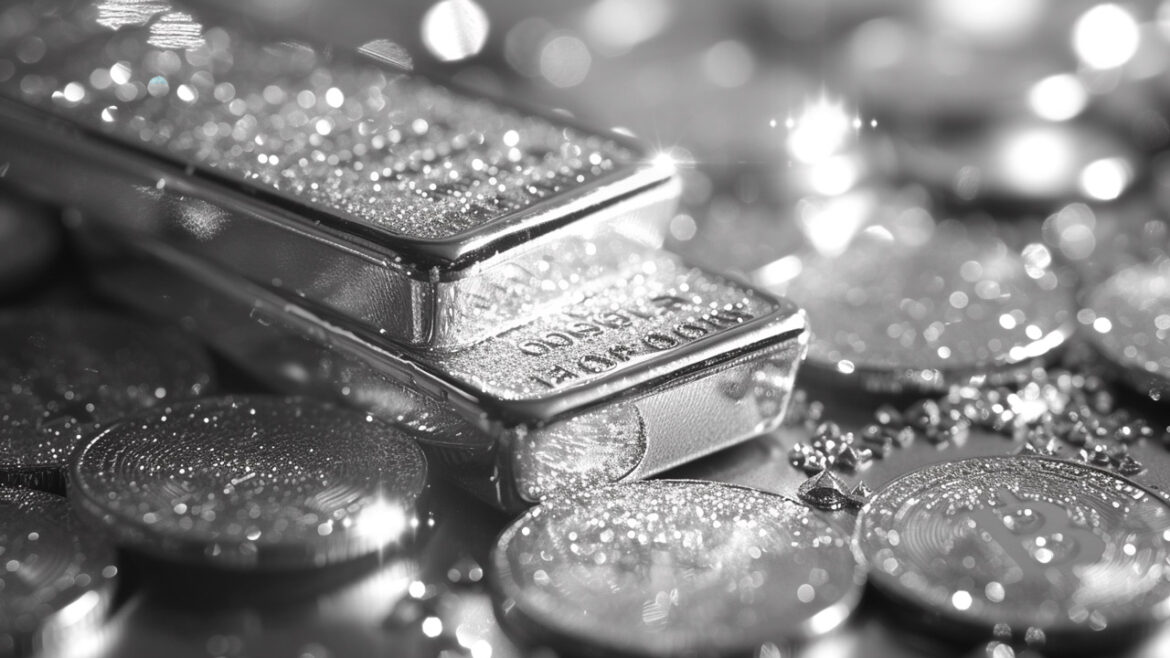Gold has all the potential to go unprecedentedly high. But silver will be gold on
Site:
Precious metals news
 Historic Debt Costs Loom: 2025 Debt Interest Costs to Exceed World War II Levels
Historic Debt Costs Loom: 2025 Debt Interest Costs to Exceed World War II LevelsFeb 8, 2024 - 06:32:18 PST
The Congressional Budget Office (CBO) has issued a warning that the cost of servicing the US government's debt will reach a new high next year and will continue to increase. This situation raises concerns about the government's borrowing pace. US debt held by the public is expected to reach $45.7 trillion, or 114% of GDP by 2033, according to the CBO’s latest forecasts. That’s actually down from the 118% projection for 2033 released a year ago.
To help you stay ahead of potential trouble in the markets, we're closely monitoring the commercial real estate sector, which is under stress from decreasing demand and soaring lending costs. Banks supporting the sector, including NYCB, are on the brink -- will it be an isolated event or a contagion that could infect the financial system?
New York Community Bank is in the midst of a financial storm, and we've got you covered with a dedicated website at GoldSilver.
While broader macroeconomic trends are always what’s most significant for the gold price during any given election, some interesting trends emerge when you look at the numbers. And when an election is contentious, historic, or chaotic as 2024’s promises to be, the outcome is all the more significant for gold.
 U.S. NATGAS PRICE PLUNGING BACK TO 30-YEAR LOWS: Energy Cliff Volatility Impacted Natgas Market The Most
U.S. NATGAS PRICE PLUNGING BACK TO 30-YEAR LOWS: Energy Cliff Volatility Impacted Natgas Market The MostFebruary 8, 2024
As forecasted, the U.S. Natgas price has now fallen below the $2 level and will likely continue even lower. Unfortunately, the ENERGY CLIFF is impacting the Natgas Market the most as the U.S. Henry Hub price is now falling below the total cost of production...
In response to declining sales driven by increased menu prices, McDonald's CEO Chris Kempczinski has announced a strategic pivot towards affordability in 2024. The announcement comes after the fast-food giant faced backlash for pricing a Big Mac combo meal at nearly $18, a move that alienated its core customer base. Despite achieving a 3.4% growth in global same-store sales for the latest quarter, McDonald's fell short of the anticipated 4.7% growth, a shortfall attributed to both the price hikes and impacts from Middle Eastern conflicts on overseas franchisees. This resulted in a nearly 4% drop in McDonald's stock price to $285.97.
 The Spreading Crisis in Commercial Real Estate: "Greatest Real Estate Crisis Since 2008"?
The Spreading Crisis in Commercial Real Estate: "Greatest Real Estate Crisis Since 2008"?Feb 7, 2024 - 09:49:50 PST
The US commercial real estate market's difficulties have now spread to Europe. Deutsche Pfandbriefbank AG in Germany has become the latest bank to face challenges, with its bonds dropping due to its significant exposure to the troubled real estate sector.
The bank has had to unexpectedly increase its financial cushions because of the “persistent weakness of the real estate markets.” It described the current turmoil as the “greatest real estate crisis since the financial crisis.”
The situation is made even worse by rising interest rates, which have lowered property values worldwide. US Treasury Secretary Janet Yellen acknowledges the concern but believes the issue is manageable, even as the US office market suffers from decreased values post-pandemic, with predictions of further declines ahead.
Total gold demand hit an all-time high in 2023, according to a recent report released by the World Gold Council.Last week, the World Gold Council (WGC) released its Gold Demand Trends report, which tracks developments in the demand for and use of gold around the world. Excluding over-the-counter (OTC) trade, 2023 gold demand fell slightly from 2022 to just under 4,500 tonnes. With OTC demand accounted for, last year’s demand peaked at 4,899 tonnes, the highest figure ever recorded.
Despite indicators of a strong economy, including brisk consumer spending, moderated inflation, and an unemployment rate holding below 4% for two years, Americans remain pessimistic about their economic future. This paradox has left economists, investors, and business owners puzzled. However, when digging deeper, it becomes clear that this sentiment is rooted in concerns over long-term financial security, which many feel is threatened by broader social and political issues...
While it doesn't approach having the same wealth-protecting power of gold or silver, platinum is a precious metal that just never quite gets the love it deserves. Practically speaking, other than jewelry, platinum is best known as a crucial element for catalytic converters for cars. But it’s also used in manufacturing everything from jet engines and missiles to semiconductors and fertilizers.
New York Community Bancorp (NYCB) is actively working to calm investor nerves during a tumultuous week that saw its stock plummet by 60%. The turmoil was made worse when Moody's decided to downgrade the bank's credit rating to junk. In a late-night press release, NYCB disclosed that its total deposits have increased since the close of 2023, and its total liquidity pool of $37.3 billion now surpasses its uninsured deposit levels. This move is seen as an effort to restore confidence and stability in the face of recent financial challenges.
Workers are seeing real wage growth, with hourly earnings rising 0.6% in January and 4.5% year-over-year, surpassing inflation rates. This improvement reflects a robust labor market where workers in certain sectors enjoy significant bargaining power, marking a shift from the previous two years when inflation outpaced wage increases.
Amid rising financial pressures due to inflation, increased interest rates, and the cessation of pandemic relief efforts, American credit card debt has hit a record $1.13 trillion in late 2023. The New York Federal Reserve reports a 1.2% increase in overall household debt, with credit card delinquencies rising significantly. This situation underscores the importance of prioritizing debt repayment to mitigate the impact of these economic challenges.
ZeroHedge - Phil Streible explains why now is the time to invest in precious metals.
Federal Reserve Chair Jerome Powell announced plans to reduce interest rates three times within the year, signaling a start potentially by May. Despite recent aggressive rate hikes to combat inflation, Powell expressed optimism about the U.S. economy's strength and dismissed recession fears. This strategy suggests a shift towards easing the financial conditions, reflecting confidence in economic stability and growth potential.
In the landscape of economic foresight, John Exter, a distinguished hard money advocate and former precious metals expert for The Fed, offers a model that resonates with the principles upheld here at SchiffGold. Developed in the 1970s, Exter's Inverted Pyramid of Risk remains as relevant as ever, especially in assessing assets through the lens of counterparty risk. The pyramid serves as a guide to comprehend the risks facing America, particularly in anticipation of what may be the most severe credit crisis in the coming decade or two, centered around the USD crisis.
Despite geopolitical tensions and a tumultuous start to the year, oil traders are increasingly investing in oil derivatives, pushing open interest in oil futures contracts to its highest level since March 2022. This surge, involving about 660 million barrels of oil derivatives, occurs despite crude oil prices remaining within a narrow $10-a-barrel range. The activity reflects not only seasonal trends of portfolio rebalancing but also concerns over political risks, such as the redirection of oil tankers around Africa due to conflicts in the Middle East, economic uncertainties including interest rate outlooks, and the potential for Chinese economic recovery.
Chinese government officials, led by the China Securities Regulatory Commission, are set to brief President Xi Jinping on the nation's stock market turmoil and planned policy measures, sparking hope among investors for a robust intervention to halt the market's decline. The briefing comes as Chinese stocks show signs of recovery, with significant gains in both major and small-cap indices. Despite the uncertainty of new support measures, the market's recent performance reflects growing expectations for decisive government action amid concerns over investor sentiment and consumer confidence as China approaches the Lunar New Year holiday.
 Middle East Tensions Rise: Recent Strikes Near U.S. Base in Syria Escalate Ongoing Conflict
Middle East Tensions Rise: Recent Strikes Near U.S. Base in Syria Escalate Ongoing ConflictFeb 6, 2024 - 06:58:17 PST
The recent strike near a U.S. base in Syria resulted in the death of six members of a U.S.-allied militia, highlighting the ongoing challenges faced by Washington in managing conflicts in the Middle East. This incident follows a series of U.S. airstrikes targeting Iran-allied militia sites, demonstrating the persistent tensions and the difficulties in containing regional hostilities. Despite these aggressive measures escalating, the U.S. is attempting to contain the conflict in the region.
Incrementum shares the Monthly Gold Compass February 2024 report.












